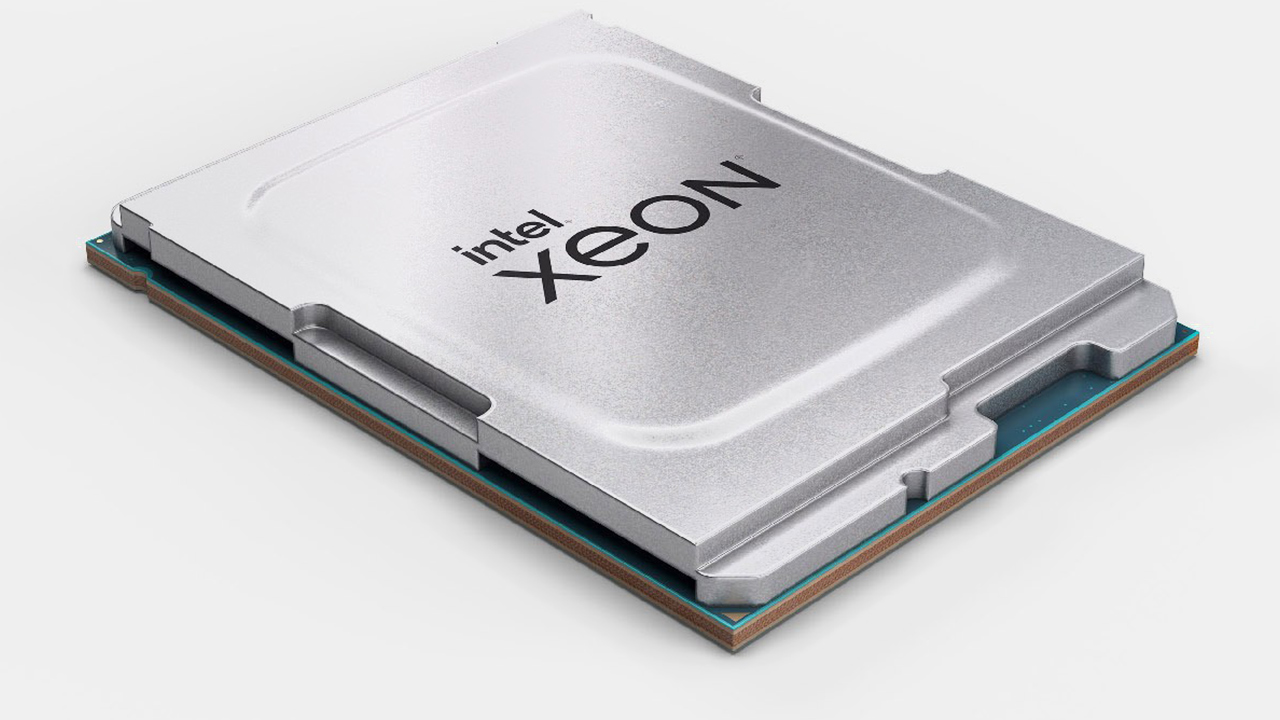Intel Xeon Granite Rapids-W CPU specs allegedly leaked — up to 128 PCIe 5.0 lanes and eight-channel memory support

Intel is working on two workstation platforms based on its Xeon W 'Granite Rapids-W' processors aimed at 'mainstream' and 'expert' workstations, according to Jaykihn, a hardware leaker who tends to have access to Intel's plans. The platforms will feature different numbers of general-purpose high-performance cores, memory subsystems, and the number of PCIe lanes but will be based on the Intel W890 chipset.
Intel's Xeon W 'GNR-W' processors will likely belong to the Xeon W-2600 and Xeon W-3600-series products unless Intel changes its nomenclature. Intel's Xeon W-2600 CPUs will target 'mainstream' workstations and feature a quad-channel DDR5 memory controller as well as up to 80 PCIe 5.0 lanes, whereas the Xeon W-3600 CPUs will aim high-end 'expert' workstations and will get an eight-channel DDR5 memory subsystem as well as up to 128 PCIe 5.0 lanes. The number of PCIe 5.0 lanes supported by the Xeon W-3600 'expert' platform will differentiate the high-end desktop Xeon W9 CPU from the Xeon 6 R1S, aimed at specialized server applications.
Both platforms will be based on Intel's W890 chipset, which uses eight PCIe 4.0 lanes to connect to CPUs and supports 24 PCIe 4.0 lanes to enable platform connectivity.
The new Xeon W 'Granite Rapids-W' CPUs will feature the company's latest high-performance cores used in Xeon 6 6700P and Xeon 6 6900P processors, though the number of cores will differ for Xeon W-2600 and Xeon W-3600 CPUs. The exact number of cores featured by these products remains to be seen. Keeping in mind that Intel has silicon that packs up to 128 high-performance cores, the company can offer something with a very high core count to better compete against AMD's Ryzen Threadripper CPUs, but since we are talking about workstations, it needs to have a balance between core count, frequency, and power consumption.
The leak about Intel's Xeon W 'Granite Rapids W' comes days after InstLatX64 discovered Intel's official mentions of Granite Rapids-W, Granite Rapids-E, and Granite Rapids-D processors. Considering that Intel has officially mentioned the new CPUs, expect them to hit the market sooner rather than later. Still, it remains to be seen when the company refreshed its workstation lineup with Sapphire Rapids-W Refresh CPUs only in the third quarter of last year.
Get Tom's Hardware's best news and in-depth reviews, straight to your inbox.

Anton Shilov is a contributing writer at Tom’s Hardware. Over the past couple of decades, he has covered everything from CPUs and GPUs to supercomputers and from modern process technologies and latest fab tools to high-tech industry trends.
-
thestryker Intel's strategy of allowing the workstation segment to languish just seems weird. By the time these launch there will have been two new core designs on the market (or at least volume production with PTL). I can't imagine there are that many organizations interested in less efficient and capable parts in this segment which would indicate they're still simply catering to those companies who need to buy Intel parts already.Reply
The place it makes sense to do a GNR based part is Xeon D because those tend to be highly validated and the current is ICL based. -
DS426 This is like reading about 3rd Gen AMD Epyc.Reply
Slow, steady pace, Intel does it. Are we a hi-tech, innovative company, or a predictable or meh tech business like IBM? Hmm. -
DS426 Reply
Surprisingly, in the IT world, Intel still seems to have a lot of momentum on their history. I still can't seem to convince some of the other top software vendors, including security companies, that even a 50/50 perception between the two companies is reasonable in this day and age; their "partnership" with Intel seems to equate to a lack of innovation in anything outside that wheelhouse.thestryker said:Intel's strategy of allowing the workstation segment to languish just seems weird. By the time these launch there will have been two new core designs on the market (or at least volume production with PTL). I can't imagine there are that many organizations interested in less efficient and capable parts in this segment which would indicate they're still simply catering to those companies who need to buy Intel parts already.
The place it makes sense to do a GNR based part is Xeon D because those tend to be highly validated and the current is ICL based.
The investment in this previous one-horse-race shows the lack of care for customers, innovation, competition, and so on. -
usertests Reply
I want to see mainstream CPUs go to quad-channel (on future sockets).endocine said:At least bring back a mainstream CPU with more than 16 PCIe lanes
As for the lanes, aren't most technically coming with 24-28 lanes? -
thestryker Reply
12th-14th generation Intel has 20 (x16 PCIe 5.0, x4 PCIe 4.0 for M.2), Ultra 200 has 24 (x16 PCIe 5.0, x4 PCIe 5.0 for M.2 and 4.0 for M.2) and Zen 4/5 have 28 PCIe 5.0 (x16, x4 for M.2/PCIe, x4 for M.2/PCIe (800 series chipsets reserved for USB 4) and x4 for chipset). Chipsets have mixed lanes and varies depending on which one: Intel 24/14 and AMD 22/12.usertests said:I want to see mainstream CPUs go to quad-channel (on future sockets).
As for the lanes, aren't most technically coming with 24-28 lanes?
X99 era Intel had 8 PCIe off the chipset with 40/28 from the CPU (yay the days of mixed PCIe lane counts depending on SKU) and X299 was 24 off the chipset with 44 from the CPU.
While I don't think it makes sense to have quad channel memory and higher PCIe counts for every SKU there's definitely a HEDT sized hole in the market. The jump in cost from a 9950X/285K based system to TR/Xeon W is absolutely absurd, and even more so when you look back at X79/X99/X299 versus desktop of the time. I'd like to see something with 40/44 CPU lanes and quad channel memory make a return, but I just don't think AMD/Intel see enough of a market to create another socket. -
usertests Reply
I want the mainstream sockets (e.g. AM6) to expand, not another socket size between AM5/AM6 and TR/Epyc. I want quad-channel to make bigger APUs with greater memory bandwidth viable on desktop sockets. Maybe that's also necessary for the core counts that are being pushed (Intel may technically give us 52 cores: 16P + 32E + 4LPE). AMD didn't even make its socket larger like Intel did, they could do that to allow for bigger/more chiplets and more pins to add the memory channels. If DIY is a shrinking market, going bigger and more premium could make sense.thestryker said:I'd like to see something with 40/44 CPU lanes and quad channel memory make a return, but I just don't think AMD/Intel see enough of a market to create another socket.
On the other hand, maybe we'll end up buying mega APUs like Strix Halo soldered to motherboards. We'll have to live with that, hopefully with expandable memory using CAMM/LPCAMM.
WzTpkMKtYOw
Take the current lane counts, add 4, and you have at least another x4 PCIe/M.2 device. I think most people have modest storage/device needs. -
JayNor Granite Rapids-D was announced at MWC last year. MWC-2025 would be a reasonable place to launch it... March 3-6.Reply